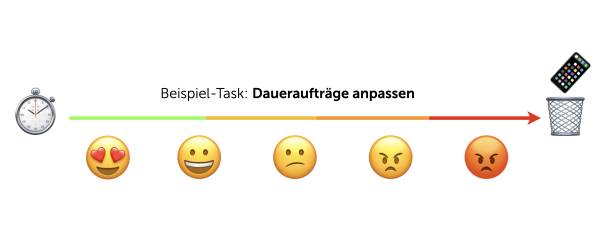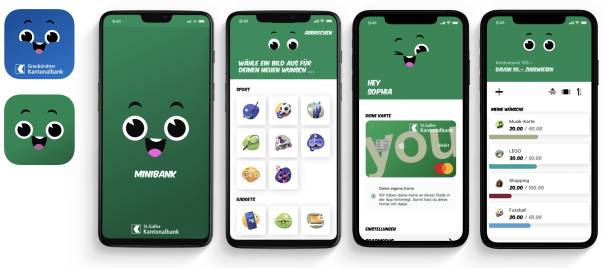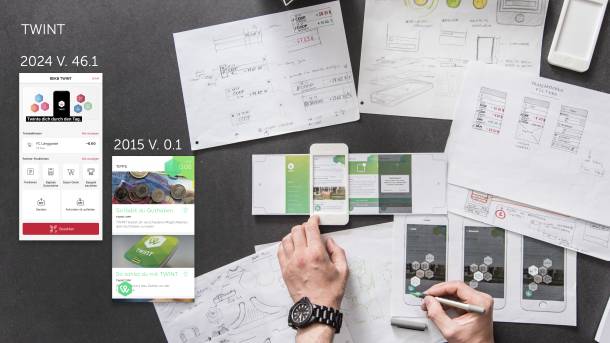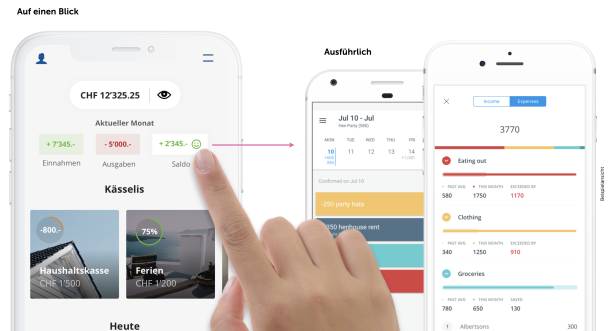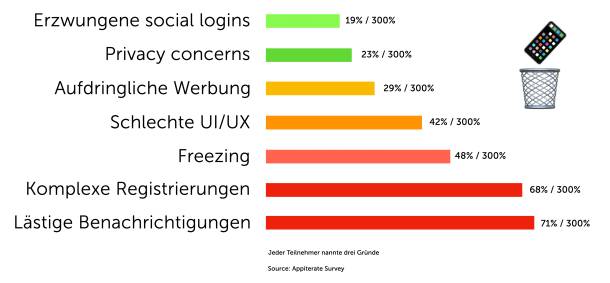The smartphone has become the central tool for many companies and businesses. Customers expect an intuitive and efficient application as well as secure and reliable services. A good user experience (UX) can make the difference between satisfied customers and lost business. In this article, we look at the importance of UX in mobile banking applications.
The terms: UX & UI
User Experience (UX)
UX encompasses the entire experience that users have when using a product, system or service. UX is shaped by emotions, beliefs, preferences, perceptions and behaviours before, during and after use.
Usability
Usability means "suitability for use" and describes the extent to which a product can be used by specific users in a specific context to achieve selected goals effectively, efficiently and satisfactorily.
User Interface (UI)
The visual design and the elements with which users interact, such as buttons, menus and layouts.
The cornerstones of user experience: saving time and providing orientation
Time is one of the most precious commodities we have. It plays a central role in banking applications: customers want to carry out their banking transactions efficiently and without detours. At the same time, they need clear guidance to find the functions they need quickly.
Saving time and providing intuitive navigation are the most important tasks of a good banking app. This not only improves the user experience, but can also increase customer loyalty to the app.

If time is the most precious thing of all, then wasting time is the greatest waste of all.
Benjamin Franklin
The role of dwell time
The difference between entertainment and tool apps
In the world of mobile applications, there is a crucial difference between entertainment apps and tool apps. While entertainment apps are designed to keep users in the app as long as possible, tool apps are designed to help them complete their tasks as quickly and easily as possible.
Entertainment apps such as social networks (e.g. Facebook, Instagram), streaming services (e.g. Netflix, Spotify) or games (e.g. Candy Crush, Pokémon GO) have the primary goal of holding users' attention for as long as possible. These apps often monetise users' attention, be it through advertising, in-app purchases or subscriptions. A longer dwell time is therefore directly linked to the success of the app.
In contrast, tool apps such as banking apps, weather apps or navigation services aim to help users complete specific tasks as quickly and efficiently as possible. The focus here is on productivity and efficiency. For these apps, the shorter the time needed to complete a task, the better.
Essential questions
Fulfil customer expectations even before use
For an app to be successful, it is crucial not only to understand customers expectations, but also to fulfill them proactively. When communicating about the app, it should already be clear how the app simplifies the customer's life. Key questions must be answered positively during the onboarding process at the latest:
Advantage
Does the app simplify my life?
Simplicity
Can I use the app?
Individuality
Do the functions and content meet my needs?
Security
Can I trust the app?
Accessibility
Can I get into the app easily, am I faster than before?
Tips & Inputs
Saving time is the top priority
If you don't manage your customers' time carefully, you will lose them. We have put together some input on four key topics:
Target group focus
User research
Operability
Navigation guidance
1. Target group focus
Firstly, it is important to understand and address the needs of different target groups. An application that is tailored to the user's needs creates long-term customer loyalty.
How do we achieve this?
Segmentation: Understanding customer needs
By identifying specific customer groups and their needs, we create the basis for a targeted UX design.Adaptivity: Offering flexible solutions
Adaptable functions ensure that different requirements can be easily met.Inclusion: Accessibility for all
The app is designed so that it remains usable for all target groups - regardless of age or ability.
Goal
Maximising customer loyalty and satisfaction through relevant and customised functions.
Takeaway
Understanding and catering to different needs in a targeted manner ensures long-term relevance and strengthens identification and loyalty.
2. User Research
Continuous optimisation as a competitive advantage
The continuous improvement of an app depends to a large extent on how well the needs and expectations of customers are understood. The perfect "user fit" can only be achieved through continuous feedback.
How do we achieve this?
Target group analysis: It analyses who uses the app and for what reason in order to make targeted adjustments to the functions.
Usability tests: Identification of weak points in the user flow in order to eliminate obstacles.
Feedback loops: Regular surveys and tests help to continuously improve the app.
Goal
The app's functionalities are increasingly geared towards the actual requirements and expectations of users.
Takeaway
User research is not a one-off project. It is a continuous process that ensures that the app meets the changing needs of users and always remains relevant.
When we at Apps with love designed the first version of the Twint app in 2015, the range of functions and benefits for customers were still unclear. It was only through continuous optimisation and a focus on the essentials that the app finally became the simple and efficient tool it is today.
3. Operability
Functionality meets simplicity
An easy-to-use app combines functionality and simplicity. The most important functions must be directly accessible while the user interface remains intuitive. This is the only way for users to complete their tasks quickly and effortlessly.
How do we achieve this?
Prioritisation: Make frequently used functions immediately accessible and easy to use.
Relevance: Only display advanced features when they are needed.
Modularity: Create a flexible structure that seamlessly integrates additional functions.
Goal
The app will be clear and simple, making it easier to use and increasing customer satisfaction.
Takeaway
Design goes beyond aesthetics - it is the key to utilisation, creates trust and promotes a sense of belonging among customers.
Seven reasons why customers delete an app
Many reasons why we delete an app are directly related to time and orientation. Forced social logins, complicated registrations and poor UI/UX lead to users losing time unnecessarily or not finding their way around the app. Intrusive adverts and annoying notifications are also distracting, while poor design or frozen apps lead to frustration. All of these factors influence how easily and quickly users achieve their goals in the app - and ultimately whether they keep or delete the app.
Inspire customers
Going beyond expectations
To develop a successful app, it is not enough to simply fulfil customer expectations. Fulfilling expectations only triggers a neutral emotion and only ensures basic satisfaction. However, in order to inspire customers, the functions and user experience must exceed expectations as far as possible. If this succeeds, satisfied users become loyal customers. Enthusiastic customers recommend the app to others and actively contribute to its success by sharing their positive experiences and thus creating trust in the product.
Conclusion
The power of UX design should not be underestimated - this is especially true for apps that have a tool character, such as in mobile banking. In a highly competitive market, small details often decide whether customers stay or switch to the competition. Banks that invest in an outstanding UX not only create a better product, but also build a strong customer relationship.
The task of UX design is to create intuitive applications that offer customers guidance, save time and exceed their expectations.


